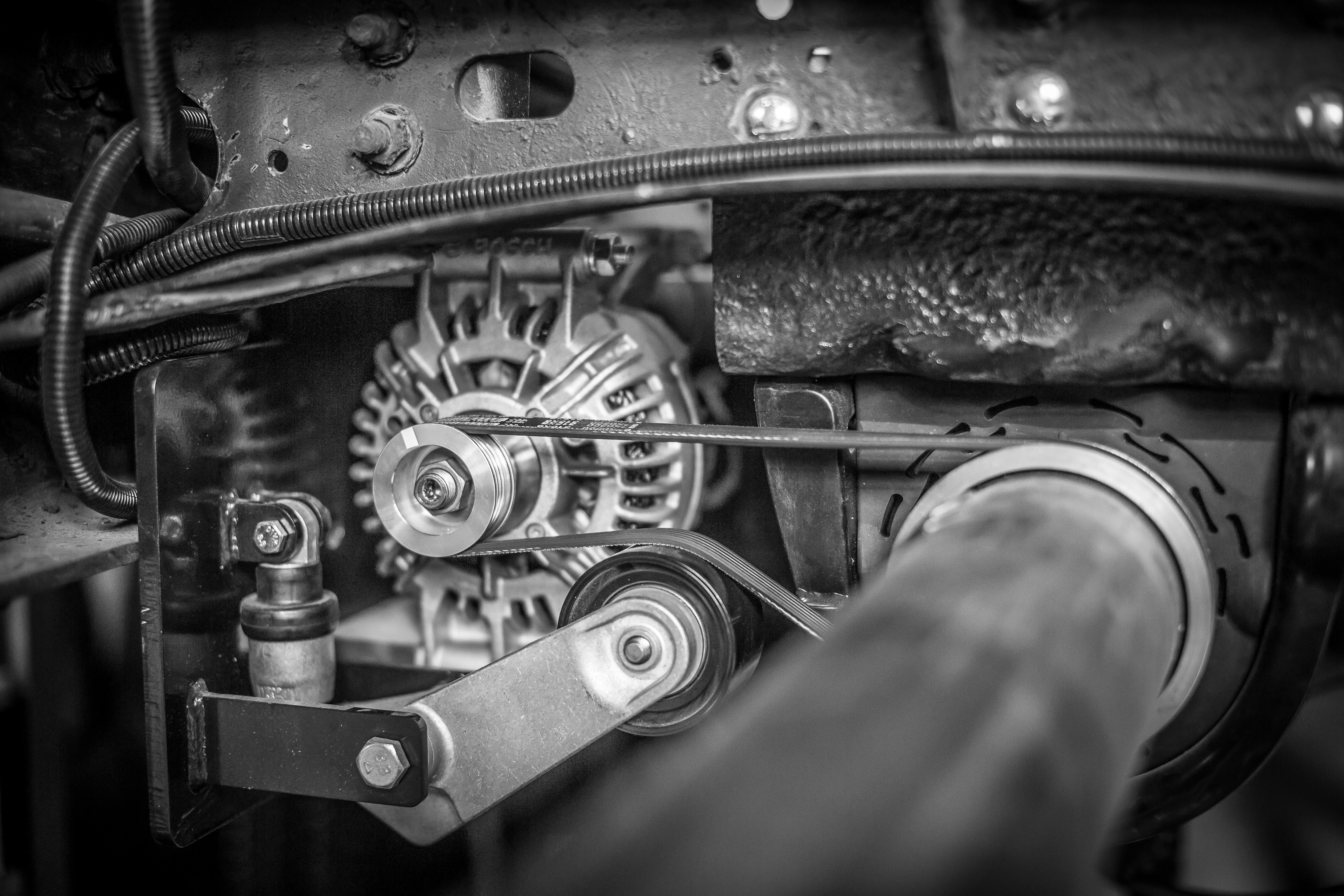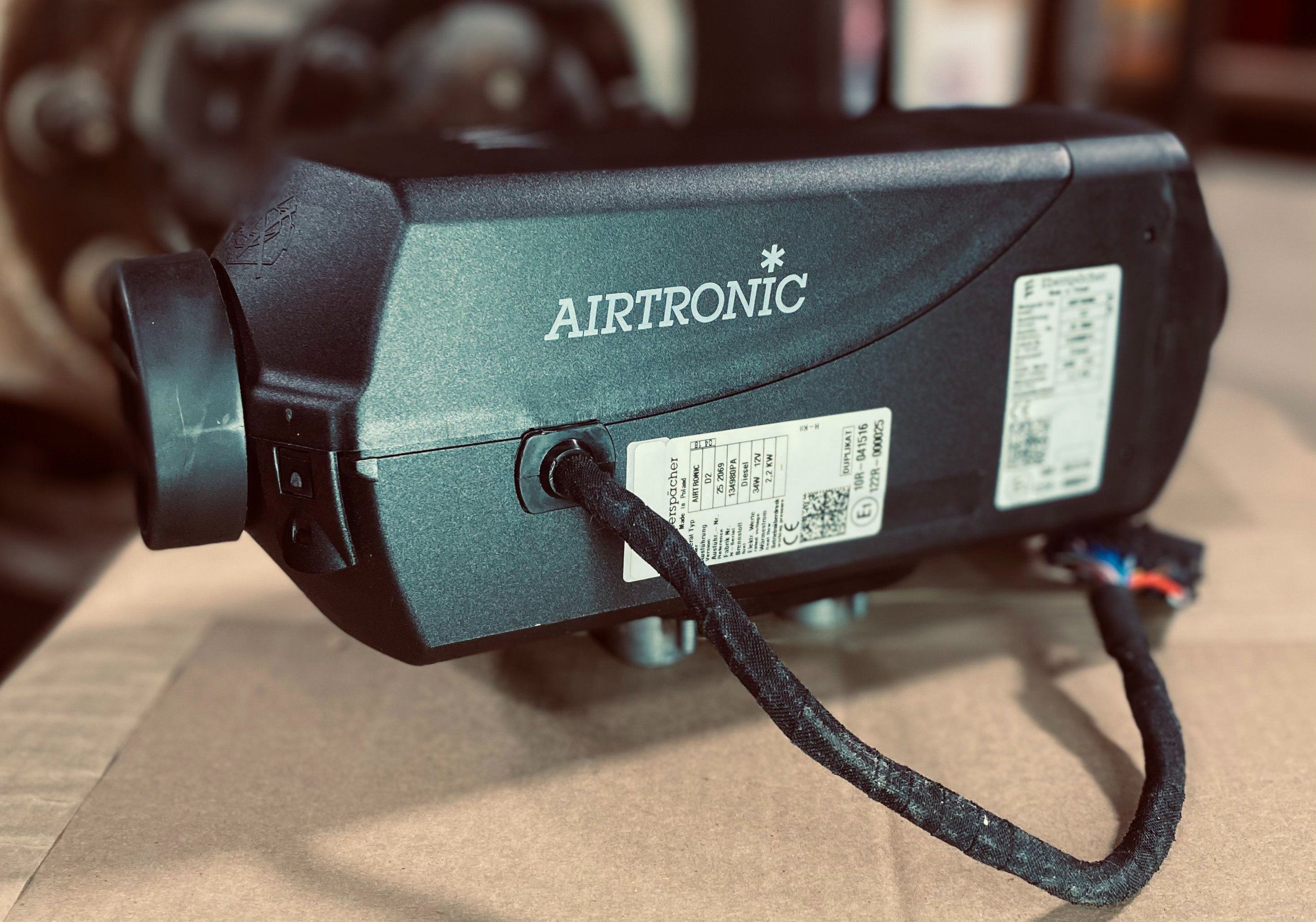Part 2: Configuration Tips for Fleet Managers to Improve Electric APU Performance
by Andrew Amigo | Aug 12, 2020 | Preventative Maintenance, RelGen, Battery Recharge, DC/DC converters, Electric APU, Charging Solutions, Voltage Loss, Anti-Idle, Solar Panels | 0 Comments
This is the second post in our two-part series: How to Maximize the Performance of Your Electric APU. In this second part, we will focus on tips for fleet managers configuring an electric APU. See Part 1 for tips focused towards drivers.
Electrified bunk AC systems are becoming more popular because they are cleaner, quieter, have little to no maintenance costs and meet no-idle regulations without the need for additional aftertreatment systems. They also generally cost less than their diesel counterparts and if you follow these tips you can expect a runtime of 8-10 hours.
Every major truck OEM offers an electrified AC option on new trucks. This factory option is typically the best option as the price tends to be lower than an aftermarket electrified AC and installation is handled at the factory or modification center prior to the truck entering service.
Of course, an electrified AC unit is only as good as the charge in the batteries powering the unit. Pre-cooling, closing curtains, and adding solar shields does help to extend run time of the AC while the driver is on the road. For driver tips, see Part 1 of this series, Driver Pro Tips to Optimize the Performance of Your Electric APU. Ultimately, however, the unit’s performance is enhanced or limited by the quality of the batteries and the charging source powering them.
7 Configuration Tips for to Improve Electric APU Performance
These next seven tips are for fleet managers configuring electrified AC units.
1) Pick your AGM Batteries Carefully
Not all Absorbed Glass Mat (AGM) batteries are created equal nor do they cost the same. Batteries are crucial to the performance and ROI of your electrified AC. In the future we will publish a full post on AGM batteries, but for now you should check the following when selecting batteries for your electrified AC.
Purity of Lead. The lead acid battery industry recycles almost all the lead used in automotive batteries. Depending on the process, recycling can create impurities in the lead, and these impurities tend to reduce the performance of the battery. Impurities limit cell performance: over a period of time, impurities contaminate the positive and negative active material and lower the hydrogen overvoltage, directly influencing the charging efficiency (The influence of traces of impurities in the lead-acid battery electrolytes Buldini, Laghi, Saxena, Sharma). Impurities can also increase the internal resistance.
Internal Resistance of the battery will greatly affect the speed of recharge. Lead acid batteries, even AGMs, will resist the electric charge being applied. The lower the internal resistance the faster the re-charge, the less stress on your alternator, and consequently the less fuel required to recharge the auxiliary batteries. Internal resistance is measured in Ohm’s (Ω) which is the electrical unit of resistance. An internal resistance of 2.2 Ω is among the best on the market.
Vibration Resistance. AGM’s that protect against vibration in the construction of the battery will help extend battery life and performance. Excessive vibration can damage an AGM and cause premature battery failure. In addition, we recommend following TMC recommended practices for reducing battery vibration, for example TMC RP 125A Battery Vibration Standards.
Cycle Life. The electrified AC will draw power until battery voltage reaches the system’s low voltage cut off. Typically, this voltage cut off is between 11 and 11.5 volts, which is generally considered fully discharged or 100% depth of discharge (DoD). Most manufacturers of AGM’s will state the number of charge-discharge cycles at 80% DoD. The higher this number the longer the battery will perform for this application. 400 charge-discharge cycles at 80% DoD is among the best on the market.
2) If You Upgrade the Engine Alternator, Upgrade the Cable Size
When most fleets invest in electric AC units, they will often upgrade the 130-160-amp stock engine alternator to a 280-320-amp alternator which helps to double the amperage output of the alternator. However, sometimes when fleets update the engine alternator, they do not re-cable the truck with larger power and ground cables. This results in a cruel irony of Ohm’s Law which describes the relationship between resistance, voltage and current. When you increase the amount of current but do not increase cable size, you increase the loss of voltage over that cable. Make sure to also upgrade your power and ground cables to a gauge rated for a current carrying capacity that is at least 125% of the maximum current expected to run through the cable.
3) Understand Causes of Voltage Loss
Voltage loss over long cables points to a more complex problem than just cable size. The electrical power from an engine mounted alternator must travel from the alternator to the starter batteries and multiple battery terminals and connectors, then through another set of cables and connectors, circuit breakers, relays and fuses finally arriving at the auxiliary batteries.
This 30+/- feet of cable plus the many points of resistance reduce the flow of electricity. The more points of resistance results in lower voltage reaching the batteries, which increases the time required to charge the batteries and adds more stress on your engine mounted alternator.
While estimates vary slightly, all this resistance means the oversized engine alternator will run hot all day decreasing your MPG by as much as 0.1 to 0.2 MPG. Anecdotally, we hear from many fleets that this increased duty cycle is causing premature alternator failures as well, often ending in mechanical breakdown and roadside service or a tow.
The AGM batteries require over 14V to create the right chemical conditions to create a charge. The multiple points of resistance and cable length between the engine alternator to the auxiliary batteries causes voltage to drop below 14 volts, which means that you are not effectively charging the batteries, even with the proper cable size.
Wherever possible, use the shortest distance for routing cables and eliminate any unnecessary connections. Every lug is another point of resistance. Make sure to include in your Preventative Maintenance Program a full inspection of the charging system, taking care to check for corrosion on terminals and make sure connections are tight to minimize all points of resistance that impedes the flow of electricity and partially prevents charge.
4) Consider Buying Trucks with Better Insulation
The insulation factor of your vehicles plays a major role in the efficiency of your heating and cooling, including an electric APU. OEMs will often offer an insulation package (aka artic package) providing superior insulation. Choosing this package when you buy your trucks will enable your electric APU to cool and maintain temperature more easily.
5) Understand the Limits of an Engine Mounted Alternator
The drive time required for an engine mounted alternator to charge the auxiliary batteries from 0% (~11.6 volts) to 100% (~12.8 volts) is close to 10 hours. Undercharging frequently occurs when the driver’s duty cycle is 6 - 8 hours. In those shorter drive cycles, the batteries are usually only charged to about 70% which significantly reduces the AC’s run time, resulting in a common complaint about electrified AC units.
The chemistry of lead acid batteries resists more charge when they reach 80% (so called saturation). Even a bigger, more powerful alternator still has difficulty pushing through saturation and needs more runtime to complete the auxiliary battery charge to 100%. Consequently, even with an 8-10-hour drive cycle, the batteries are often still not charged to 100%.
It is critical to identify the right charging source for your vehicle to regularly achieve 100% state of charge to protect the health of your batteries and to maximize your investment in an electric APU (see Potential Charging Solutions below). The difference in AC runtime between batteries at 80% and 100% state of charge is nearly 2 hours!
6) Consider a Charging System
Different charging solutions will work for different operations. Ultimately, the best configuration will get the auxiliary batteries to 100% as quickly and as often as possible both for peak performance of the system and the health of the batteries. Here are three potential solutions to help your fleet close the charging gap left by an engine mounted alternator. The charging gap is the difference between the amount of electricity you can generate and store in the auxiliary batteries during an average day’s drive and the electric demand from the use of the appliances you run on those auxiliary batteries.
- Solar Panels. If your trucks are exposed to long periods of sunshine, solar panels provide a small charge which is very helpful in some cases. But solar suffers from the obvious limitations of rain, snow, nighttime and limited power output. Determine the charging gap on your trucks, understand the output of each panel to determine if solar can solve your charging issues. Successful solar installs usually have a small charging gap and use three or more high output panels with fleets that operate in a favorable geography. Otherwise, solar will disappoint.
- DC-DC Converters. If you cannot eliminate or overcome the structural causes of voltage loss, a DC-DC converter may be of use. It can help increase voltage levels at the auxiliary batteries which can help overcome the voltage loss problem. Keep in mind, they are not true charging systems since they do not create energy, they just transform it by converting amperage into higher voltages, resulting in a reduction in current that reaches the batteries. They also introduce efficiency losses as they are generally 80% efficient. Seldom are they a true solution to charging issues, but DC-DC converters are a useful addition when used in concert with devices that create additional electric power.
- Hybrid Charging. Charging systems like Blackburn Energy’s RelGen®, generates a dedicated 200 amps to your auxiliary batteries and can charge 4 AGM batteries from 0 to 100% full in about 3.5 hours of driving. RelGen has no voltage loss problem since the power creation and storage is within 2 or 3 feet of the auxiliary batteries. Blackburn Energy’s Hybrid Charging is recognized as the fastest charging on the market.
Use of Blackburn’s Hybrid Charging eliminates any need to change the factory engine alternator, cable size or connector configuration and will charge in any conditions day or night ensuring full charge in your batteries and max performance from your electrified AC – an any other appliances you want to power. RelGen will also help eliminate the lost MPG resulting from a 300+/- engine alternator.
7) Be Mindful of Inverters & Accessories
It is important to be mindful of other accessories that may be drawing on auxiliary batteries. Inverters allow the driver to run other appliances in the cab like a CPAP machine, coffee pot, crock pot, microwave, refrigerator, laptop all from the power in the auxiliary batteries. Of course, the more you draw on the auxiliary batteries, the less run time the AC unit will have. You can certainly add more batteries, but even an upgraded engine mounted alternator is not able to charge more than 4 batteries in a day’s drive.
RelGen can charge 8 batteries in 6 hours, which can help with additional things that you may want to do for your drivers. For fleets that want to electrify the entire bunk and take the electric load completely off the starter batteries and engine alternator, Blackburn’s Hybrid Charging system, RelGen is a great way to save diesel and eliminate any battery issues for good.
Final Thoughts
When deciding to purchase an electrified AC for your sleeper, make sure to pay attention to the little things.
- If you upgrade the engine alternator you must also re-cable or you are reducing the ability for that engine alternator to re-charge the batteries which will dramatically reduce the run time of the AC.
- Take the time to understand the total power draw you will put on the auxiliary batteries from every piece of equipment and spec the right number of batteries. Inverters are a popular option to plug in appliances like refrigerators and microwaves, but their use adds to the load and reduce your AC runtime.
- Understand your drive cycle. If your fleet frequently drives 6-8 hours (as opposed to 8-10) your engine alternator (even a properly upgraded one) will not fully charge the auxiliary batteries which will also reduce AC runtime and shorten the life of the batteries.
- Understand the MPG penalty that larger engine alternator may cause, it is common to see a 0.1 – 0.2 MPG loss due to the 300+/- amp alternator. And the higher the overall resistance in your electrified AC configuration (cables, batteries etc.) the longer and harder your alternator will need to run and the more fuel you will lose.
Blackburn Energy may be able to eliminate all these issues with our Hybrid Charging system.
RelGen is generally recognized as the fastest charge on the market and nothing beats a full charge on a hot night.
<< Go back to Part 1: Driver Pro Tips to Optimize the Performance of Your Electric APU.
Check out our top post Invest in Electric APUs and Solve Their Charging Problems with RelGen.
Most Popular
Categories
- RelGen (18)
- Anti-Idle (14)
- Charging Solutions (13)
- Battery Recharge (11)
- Electric APU (10)
- Liftgates (10)
- Preventative Maintenance (7)
- Voltage Loss (6)
- DC/DC converters (4)
- Driver Retention (4)
- Uptime (4)
- fuel savings (3)
- 48V (2)
- Blackburn Team (2)
- Solar Panels (2)
- Consulting (1)
- DOT compliance (1)
- Espar Airtronic D2 Diesel Fired Air Heater (1)
- Financing (1)
- Hardware as a Service (1)
- Power Wall (1)
- alternators (1)
- data (1)
Archives
- October 2020 (4)
- November 2020 (4)
- May 2020 (3)
- September 2020 (3)
- March 2021 (3)
- April 2021 (3)
- July 2020 (2)
- August 2020 (2)
- January 2021 (2)
- June 2020 (1)
- July 2021 (1)
- August 2021 (1)
- October 2021 (1)
- January 2022 (1)
- February 2022 (1)
- March 2022 (1)
- June 2022 (1)
- October 2022 (1)
- January 2024 (1)
- March 2024 (1)
- May 2024 (1)
- September 2024 (1)












